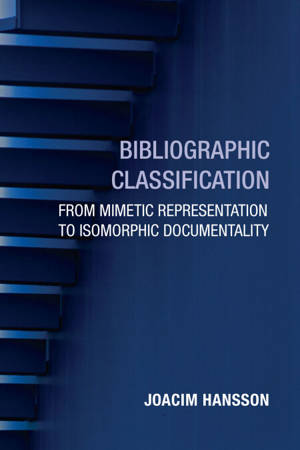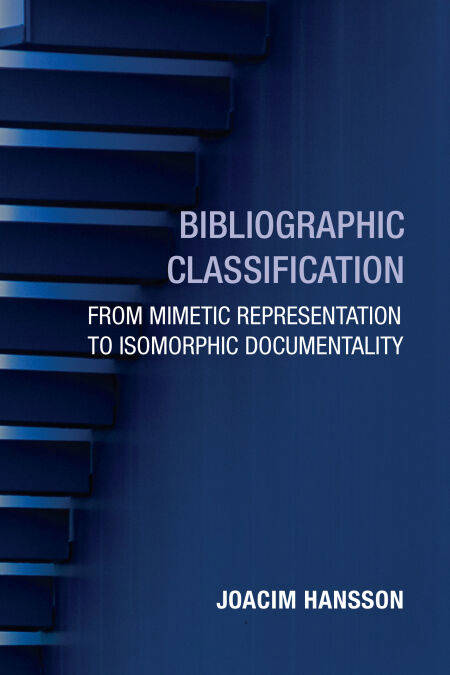
- Afhalen na 1 uur in een winkel met voorraad
- Gratis thuislevering in België vanaf € 30
- Ruim aanbod met 7 miljoen producten
- Afhalen na 1 uur in een winkel met voorraad
- Gratis thuislevering in België vanaf € 30
- Ruim aanbod met 7 miljoen producten
Zoeken
Bibliographic Classification E-BOOK
From Mimetic Representation to Isomorphic Documentality
Joacim Hansson
€ 59,14
+ 59 punten
Omschrijving
A novel analysis that understands bibliographic classification systems as autonomous documents and not just as information retrieval tools.
Bibliographical classification systems are developed as tools for the retrieval of documents and information in libraries or bibliographical catalogs. Traditionally, they have also served as organizing principles for library shelving. As with most kinds of classification, bibliographic classification systems are products of their time, encoding the beliefs and values of the cultures in which they are created. In Bibliographic Classification, Joacim Hansson addresses the connection between classification and society in a new way by analyzing bibliographic classification systems not just as information retrieval tools, but as autonomous documents, using a theoretical foundation from Document Studies, Information Science, and Organizational Theory.
The book advances its argument in three case studies: the Universal Decimal Classification, read as part of progressive social movements in early twentieth-century Belgium; the Swedish SAB-system, developed in the late 1910s, read as a formulation of cultural integrity and nationalist reformulation; and Jewish bibliographic classification practice with specific focus on how to address historical Jewish identity and the Holocaust in Judaica collections.
Bibliographical classification systems are developed as tools for the retrieval of documents and information in libraries or bibliographical catalogs. Traditionally, they have also served as organizing principles for library shelving. As with most kinds of classification, bibliographic classification systems are products of their time, encoding the beliefs and values of the cultures in which they are created. In Bibliographic Classification, Joacim Hansson addresses the connection between classification and society in a new way by analyzing bibliographic classification systems not just as information retrieval tools, but as autonomous documents, using a theoretical foundation from Document Studies, Information Science, and Organizational Theory.
The book advances its argument in three case studies: the Universal Decimal Classification, read as part of progressive social movements in early twentieth-century Belgium; the Swedish SAB-system, developed in the late 1910s, read as a formulation of cultural integrity and nationalist reformulation; and Jewish bibliographic classification practice with specific focus on how to address historical Jewish identity and the Holocaust in Judaica collections.
Specificaties
Betrokkenen
- Auteur(s):
- Uitgeverij:
Inhoud
- Aantal bladzijden:
- 216
- Taal:
- Engels
- Reeks:
Eigenschappen
- Productcode (EAN):
- 9780262384865
- Verschijningsdatum:
- 17/11/2025
- Uitvoering:
- E-book
- Beveiligd met:
- Adobe DRM
- Formaat:
- ePub

Alleen bij Standaard Boekhandel
+ 59 punten op je klantenkaart van Standaard Boekhandel
Beoordelingen
We publiceren alleen reviews die voldoen aan de voorwaarden voor reviews. Bekijk onze voorwaarden voor reviews.








